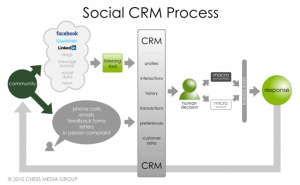Many people will tell you what you’re NOT supposed to do as a marketer when attempting to leverage the variety of Social Media (SM) platforms currently at your disposal. It is common knowledge that marketers must abstain from the autocratic, one-way, didactic marketing tactics that they have traditionally employed and instead must use this new medium to interact with customers differently. The next step is where it can get confusing for marketers; what exactly should they do with SM?
Marketers have been hardwired with the need to push their message out to consumers, however SM requires a more subtle approach. Ultimately SM provides the opportunity for marketers to engage in a two-way conversation in which they can benefit from the collective wisdom of the crowd. I recently read an article that did a great job outlining what things to focus on in order to fully realize the benefits of SM by creating a great customer experience.
1. Give Your Customers a Place to Talk
2. Integrate Social Media Into Your Customer Service
3. Activate Your Existing Customer Base
4. Be Proactive
5. Reward Influencers
6. Create Compelling Content
7. Stand Out From the Crowd
The key takeaway is that marketers must thoughtfully engage with their customers across the various platforms if they are to fully realize the benefits of SM. Customers have been empowered by SM and have been provided with a platform to share their thoughts and opinions. For businesses, it is imperative to proactively play a role in these conversations and communities, as this will provide rich consumer insights. The resulting benefits of the relationships, insights and consumer understanding can be immeasurable to a firm; and this is where the true value of Social Media is for marketers. Insights allow marketers to delight customers by delivering solutions that address issues that are important to them, and this is the key to any business staying relevant and viable in the long-term.

